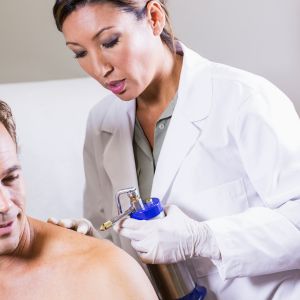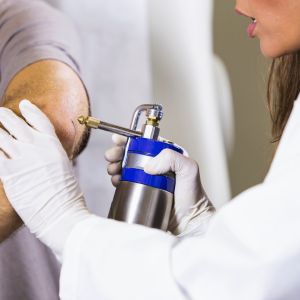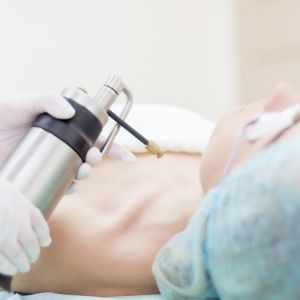Award winning dermatology service, with over 20 years on experience
Short waiting lists, on some occasions offering same week appointments
Safe environment, in Care Quality Commission approved facilities
cryotherapy shrewsbury
What is Cryotherapy?
How is cryotherapy used?
Cryotherapy is a quick, non-invasive treatment that uses liquid nitrogen to freeze and destroy abnormal or unwanted skin tissue. It’s an effective option for a variety of benign and precancerous skin conditions:
- Skin Tags – Liquid nitrogen is applied directly to the tag, freezing the tissue and causing it to fall off naturally over time.
- Warts and Verrucas – Cryotherapy effectively freezes the infected skin, killing the virus-infected cells. The treated area scabs over and eventually sheds, removing the wart or verruca.
- Seborrhoeic Keratosis – This common benign skin growth can be safely removed by freezing, which causes the lesion to flake away, revealing clearer skin underneath.
- Sebaceous Lesions – Cryotherapy can be used to reduce or remove overactive sebaceous (oil) gland growths by destroying the targeted tissue.
- Cherry Angiomas (Campbell de Morgan Spots) – These small, red vascular lesions can be treated with cryotherapy by targeting the blood vessels and shrinking the angioma.
- Freckles and Solar Lentigines (Sun Spots) – Cryotherapy freezes the pigmented cells, causing the darkened spots to fade or flake off in a short, virtually painless procedure.
- Actinic Keratoses – A common precancerous condition caused by sun damage. Cryotherapy effectively destroys the abnormal cells, reducing the risk of progression to skin cancer and promoting the growth of healthy skin.
How does cryotherapy actually work?
When the body is exposed to the cold, the skin starts sending messages to the brain, stimulating regulatory functions. The body responds by compressing blood vessels, so all blood gets pushed in the direction of the organs. It gets more oxygen and becomes nutrient-rich. The body begins releasing anti-inflammatory molecules, endorphins and toxins. As the body transitions to a warmer place and starts heating, the blood vessels expand and nutrient-rich blood flows back to the tissues, helping flush out inflammation.
FREQUENTLY ASKED QUESTIONS
IS CRYOTHERAPY PAINFUL?
IS CRYOTHERAPY SAFE?
Cryotherapy can be safe when done correctly and under the supervision of a trained professional. However, like any medical treatment, there are potential risks and side effects to consider.
WHAT ARE CRYOTHERAPY'S SIDE EFFECTS?
Cryotherapy may cause some discomfort during or after the procedure. It’s common for the treated area to become red, swollen, or blistered—this is a normal part of the healing process and typically settles within a few days. In rare cases, especially when larger or deeper areas are treated, scarring can occur. Changes in skin pigmentation are also possible, with the treated skin appearing lighter or darker than the surrounding area—this is more common in individuals with darker skin tones. Although uncommon, there is a small risk of infection, so it’s important to keep the area clean and dry. Your dermatologist will discuss all potential risks and benefits with you before treatment.
HOW MANY CRYOTHERAPY SESSION ARE REQUIRED?
While a single cryotherapy session can offer some benefits, the best results are typically achieved with regular treatments. Our specialist dermatologists can recommend the most suitable treatment plan tailored to your needs.
REQUEST A CALL BACK
Please fill in this form and one of our team will give you a call back to arrange a consultation with one of our expert dermatologists.
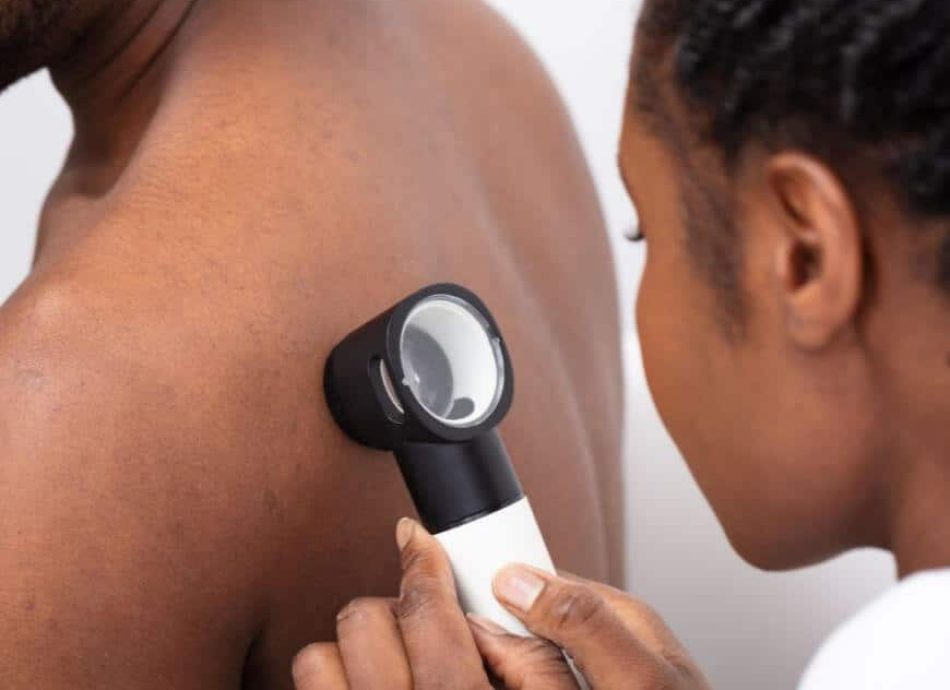
HEAR FROM OUR PATIENTS
WHY GET CRYOTHERAPY in Shrewsbury at St Michael's CLinics?
Safe and effective cryotherapy treatments near you. St. Michael’s Clinic offer cryotherapy for patients who are looking for quick and effective removal of these lesions.
We are specialists in conditions affecting the skin, hair and nails. Our goal is to provide all the care that you need when you’re experiencing these kinds of problems. We want to make it easy for you to access the best quality treatment and support
Our clinic is conveniently located in Shrewsbury, so it’s easy to visit us if you need to see a Dermatologist. You will find yourself in a very comfortable and welcoming environment. We have created a relaxing space where you will receive the highest quality of care. We are regulated by the Care Quality Commission, are part of the British Association of Dermatologists and are top-rated by patients of Doctify so you can be sure of safe and effective treatment with us.
latest INSIGHTS AND ADVICE

Your Guide to Autumn Skincare
With the weather gradually cooling and leaves taking on their autumnal palette, it’s also a gentle reminder that winter is on its way. Maintaining a vibrant and healthy skin during the transition from summer to cooler days can be challenging. Fear not – this comprehensive
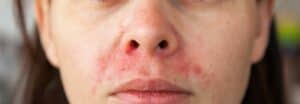
The Definitive Guide to Eczema
Eczema Awareness Month in October is a global initiative spotlighting those who suffer from this demanding skin ailment. Our perpetual aim is to arm you with a well-rounded understanding of eczema‘s core causes, differing treatments and beneficial coping mechanisms. This all-inclusive guide offers penetrating insights

Exploring Varicose Veins: Recognising, Managing and Preventing
Varicose Disease Awareness Month is focused on raising awareness about varicose veins, a common but frequently overlooked condition affecting millions globally. Throughout September, our goal is to emphasise the importance of early detection, explore the causes, treatment options and highlight lifestyle changes that can help

